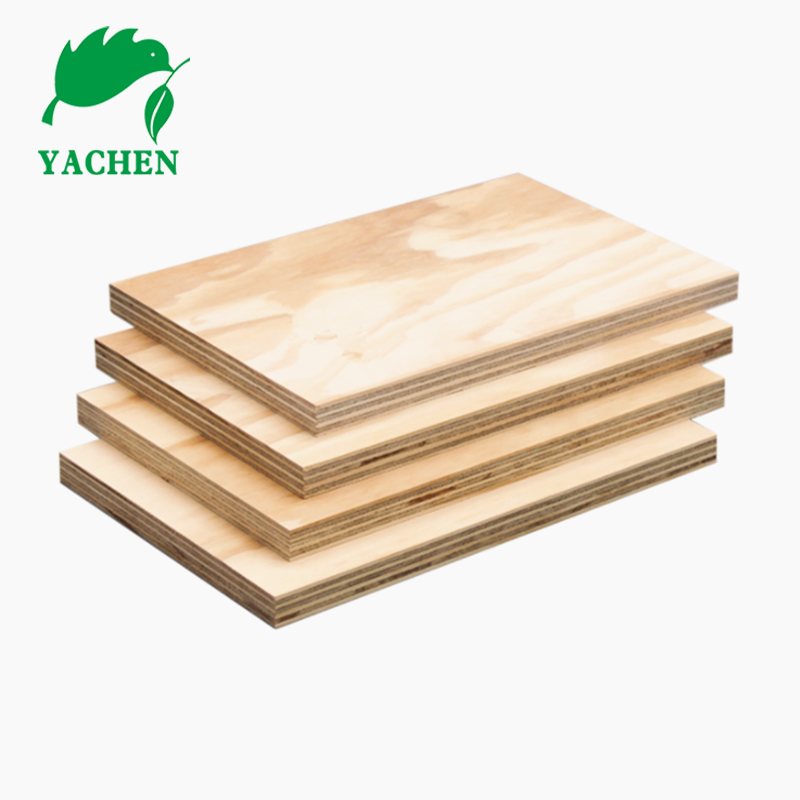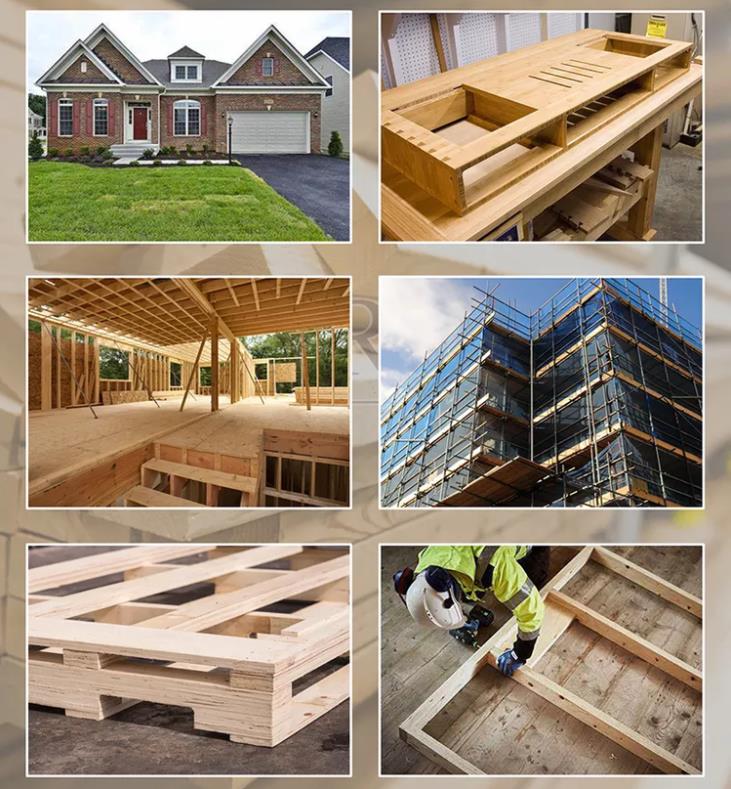Introduction: The wisdom of seeking the foundation in change
The picture of the construction industry is being redrawn by the strokes of green and low-carbon, the lines of intelligent construction and the yardstick of cost efficiency. As the fundamental support for this grand blueprint, the choice between plywood and particleboard has evolved from a simple “as long as it can be used” to a precise trade-off concerning compliance survival, project success or failure, and long-term value. In 2025, the data deluge and policy trends jointly point to a core proposition: How to find the optimal solution in the “impossible triangle” of environmental protection red lines, performance demands and cost pressures? In this article, Yachen Wood Industry will guide you through the fog and master the ultimate balance of material selection.

I. Environmental Protection – From Entry Threshold to Core Competitiveness
“Green” is no longer just a slogan but an ingrained gene in the very core of the industrial chain.
The sword of regulations hangs high, and ENF-level sets a new benchmark:
The evolution of the national standard: GB/T 39600-2021 “Grading of Formaldehyde Emission from Wood-based Panels and Their Products” has pushed the ENF grade (≤0.025mg/m³) to the peak, and its strictness exceeds the mainstream standards in Europe and America. In the tender documents for fully-furnished housing, schools and hospitals in first-tier cities, ENF grade is rapidly replacing E0 grade (≤0.050mg/m³) as a hard and fast standard.
Global Perspective: The EU’s CBAM (Carbon Border Adjustment Mechanism) is in trial operation, imposing taxes on the embodied carbon emissions of imported building materials. The demand for NAF/ULEF (no formaldehyde addition/Ultra-low Release) certification in North America has soared. For export-oriented or international project suppliers, carbon footprint tracking and low-carbon processes (such as biomass energy and adhesive innovation) have become compulsory courses.
Action Guide: Request the latest CNAS/CMA test report, clearly marking ENF level or equivalent international standards (such as CARB NAF). Pay attention to whether the factory has obtained the ISO 14064 greenhouse gas verification statement.
The Rise of Formaldehyde-free Adhesives (MDI) : A Win-win Choice
Health and performance in harmony: MDI glue (isocyanate) completely eliminates formaldehyde, addressing health risks from the source. Its outstanding water resistance and bonding strength make it particularly suitable for high-end moisture-proof/waterproof boards (such as bathroom cabinets and basement materials) and structural applications (such as CLT), with performance far exceeding that of traditional urea-formaldehyde resins.
Cost perspective: Although the unit price is relatively high, the excellent processing stability (reducing chipping), durability (lowering after-sales service), and premium capacity to meet high-end demands of MDI boards may give them a greater advantage in terms of total life cycle costs. Pay attention to the cost optimization brought about by large-scale production.
Sustainable Traceability: The Touchstone of Brand Responsibility
FSC/PEFC certification is no longer a gimmick but a hard requirement for supply chain management of large real estate developers and multinational purchasers. It ensures that the wood comes from responsibly managed forests, avoids the risk of illegal logging, and enhances the brand’s ESG rating.
Circular economy practice: The technology of reproducing high-quality particleboard from construction waste and used wood is becoming increasingly mature (such as Egger’s Recyclat technology in Europe), and the carbon footprint has significantly decreased. Pay attention to the investment and certification of suppliers in this field (such as Cradle to Cradle).

II.Performance – Scenario-based demands give rise to refined solutions
Say goodbye to the “universal board”, and only precise matching can unlock value.
Moisture-proof/waterproof performance: Data speaks, no blurring:
Key indicator: 24-hour water absorption thickness expansion rate (TS). The TS of ordinary boards should be greater than 12%, the MR Of moisture-proof boards should be no more than 8% (European standard P3), and the WR/HMR of truly waterproof boards should be no more than 5% (European standard P5, P7, or even better). For bathroom cabinets, kitchen sink cabinets and basement cabinets, it is essential to request a test report with TS≤5% and pay attention to the retention rate of “wet strength”.
The core technology: High-quality waterproof boards rely on a four-in-one combination of high-density base materials, MDI glue or modified melamine glue, deeply impregnated moisture-proof agents (such as paraffin), and perfect edge banding (PUR glue is even better). Beware of “pseudo-waterproof” products that only rely on surface veneer.
Structural load-bearing and stability: The natural advantage fields of plywood:
The mechanical beauty of lamination art: Plywood (especially birch and poplar multi-layer boards) performs exceptionally well in terms of bending resistance, deformation resistance, impact resistance and nail-holding capacity due to its orthogonal lamination structure. It is the best choice for stair treads, attic floors, beam and column reinforcement, heavy-duty shelves, and countertop support.
Key points for selection: Pay attention to the number of layers (the more, the more stable), the quality of the veneer (no gap decay), the bonding strength (national standard ≥0.7MPa), and the moisture content (8%-12% is appropriate). The structural materials used shall comply with relevant building codes (such as GB/T 20241).
Surface finish and processability: The efficiency engine of particleboard
King of Flatness: The surface of high-quality particleboard is extremely smooth, providing a perfect canvas for high-end decorative processes such as PVC film coating, acrylic coating, PETG high-gloss, and solid wood veneer veneer, meeting diverse aesthetic needs.
The darling of automated production: uniform texture, precise cutting, drilling, and edge banding (especially laser edge banding) with high efficiency and low scrap rate, perfectly suitable for large-scale customized production of panel furniture such as cabinets and wardrobes. High-density (≥680kg/m³) particleboard performs better in terms of load-bearing capacity and anti-deformation.
Fire resistance and special properties: The Key to entering the high-end market
The demand for flame retardancy is upgrading: The demand for B1 grade (difficult to burn) and even A grade (non-combustible, requiring composite inorganic materials) fireproof boards in public places and high-rise buildings is growing rigidly. Pay attention to whether it has passed the GB 8624 test and whether it has been certified by authoritative institutions (such as UL).
Functional integration: Functional boards with properties such as antibacterial, antistatic, and high sound absorption have opened up blue oceans in fields such as medical laboratories, data centers, and high-end hotels.

III. Cost – Penetrate the fog of unit price and Focus on the value throughout the entire life cycle
Shrewd decision-makers calculate the “general account”.
The hidden costs of the “low-price trap” :
Environmental risks: Excessive formaldehyde caused by inferior adhesives may lead to health disputes, failed project acceptance, and the collapse of brand reputation, with costs far exceeding the price difference of materials.
Performance shortcomings: Boards with low density and poor moisture resistance are prone to deformation, cracking and expansion, leading to a sharp increase in rework, maintenance and customer complaints, and eroding profits.
Efficiency loss: Plates with poor processing performance increase the risk of chipping and delamination, reduce equipment utilization, and delay the project schedule.
The “cost reduction” logic of high-quality boards
Processing efficiency dividend: Excellent flatness and density uniformity significantly enhance the speed and accuracy of CNC processing, reduce tool wear and debugging time. The improvement in the yield rate of automated production lines has significantly reduced costs.
Installation convenience: The stable-sized and non-deformable panels make on-site installation faster and smoother, reducing the time spent on manual adjustments.
Extralong service life: Moisture-resistant, wear-resistant and high-strength plates significantly extend the product’s service life (for example, high-quality cabinets can be used for 15-20 years), reducing the replacement frequency and total cost of ownership.
Brand premium and customer stickiness: Reliable quality builds a good reputation, leads to repeat orders and referrals, and reduces customer acquisition costs.
The bargaining power of scale and supply chain:
Lock in core suppliers: Establish strategic cooperation with large factories that have stable production capacity, raw material reserves, and technological strength to resist the risk of price fluctuations in bulk raw materials (wood, chemicals) and obtain better bulk purchase discounts.
“Prefabricated” cost reduction and efficiency improvement: By using pre-cut and pre-drilled sheet units (especially particleboard), on-site operations are reduced, the waste rate is lowered, and the construction period is shortened by 30% to 50%, with significant comprehensive benefits.
IV. Practical Selection Decision Tree – Plywood or Particleboard?
There is no best, only the most suitable. Matching oneself is the key.
Your core requirements: ultimate load-bearing capacity/structural safety
Priority recommendation: Multi-layer plywood
Core basis and precautions: The laminated structure endows it with outstanding bending/compressive strength (static bending strength ≥30MPa). Select the structural grade (such as CC class), and pay attention to the bonding strength and moisture content.
Your core requirement: Strict moisture-proof/waterproof (TS≤5%)
Priority recommendation :MDI glue waterproof grade particleboard/plywood
Core basis and precautions :MDI glue offers formaldehyde-free and super water resistance guarantees. A 24-hour TS test report must be checked! Plywood has better dimensional stability in a long-term water immersion environment.
Your core requirements: high-end finishes/customized cabinet bodies
Priority recommendation: High-density faced particleboard
Core basis and precautions: An extremely smooth surface is the foundation of high-end lamination/coating. A density of ≥680kg/m³ ensures load-bearing capacity and anti-deformation. Pay attention to the edge banding process (PUR>EVA).
Your core requirements: Rapid construction/prefabricated buildings
Priority recommendation: Prefabricated particleboard /OSB components
Core basis and precautions: High-precision pre-processing in the factory, efficient assembly on site. OSB (Oriented Strand Board) is a commonly used base material for wall and roof panels.
Your core requirement: Ultra-strict Health Standards (ENF/NAF)
Priority recommendation :MDI rubber sheet (no formaldehyde addition)
Core basis and precautions: Completely eliminate the risk of formaldehyde release. The first choice for children’s rooms, medical care and high-end home decoration. The cost is relatively high but the value is clear.
Your core requirement: Cost-sensitive universal cabinet
Priority recommendation: Moisture-proof particleboard (MR) that meets E0 grade standards
Core basis and precautions: In dry or low-humidity areas (such as bedroom wardrobes), choose compliant E0 grade + qualified moisture resistance (TS≤8%) products with outstanding cost performance.
Your core requirement: Fire safety (B1 grade)
Priority recommendation: Professional flame-retardant treated plywood/particleboard
Core basis and precautions: The national fire protection test report (GB 8624 B1 grade) and certification must be verified. Pay attention to the impact of flame retardants on environmental friendliness and strength.
Conclusion: The Art of balance, decisive for the future
In the arena of building panels in 2025, the winners will surely be the wise ones who deeply understand the iron law that “environmental protection is the line of survival, performance is the lifeline, and cost is the line of growth”. Plywood and particleboard, this seemingly traditional “twin stars”, are now demonstrating strong vitality in solving the problems of The Times through material innovation, technological innovation and model transformation.
Choose Linyi Yachen Wood Industry, and you will not only receive plywood and particleboard solutions that meet the most stringent ENF standards, precisely match performance scenarios, and have the best cost throughout the entire life cycle, but also have a long-term partner who uses data as a shield, technology as a spear, and sustainability as a belief. Let’s jointly take green as the base, performance as the pen, and efficiency as the ruler to draw the future picture of the construction industry.

